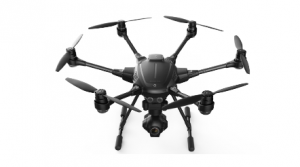Federal and state or native drone laws are sometimes targeted on defending privateness. But are extra laws actually the best way to guard you? Maybe not, say trade consultants.
When Senator Market (D-MA) launched laws earlier this month geared toward drone privateness, the trade issued a collective groan. The proposal – the Drone Aircraft Privacy and Transparency Act of 2017 – requires drone operators to supply detailed data of their flights to the federal government. The proposed Act is a response to the perceived “potential for unmanned aircraft system technology to enable invasive and pervasive surveillance without adequate privacy protections,” and states that, as “currently, no explicit privacy protections or public transparency measures with respect to such system technology are built into the law…Federal standards for informing the public and protecting individual privacy with respect to unmanned aircraft systems are needed.”
In addition, the newest model of the FAA Reauthorization Act requires analysis and motion on drone privateness points – requiring lawmakers and the FAA to deal with the difficulty as an issue.
State and Local Drone Privacy Laws
The concept that drone privateness legal guidelines are wanted appears pervasive. According to the National Conference of State Legislators, over 38 states are contemplating drone laws in 2017. Many of the proposals relate to privateness. A big proportion of the state drone legal guidelines already handed concern privateness, resembling Virginia’s HB 2350 making it a Class 1 misdemeanor to “use UAS to trespass upon the property of another for the purpose of secretly or furtively peeping, spying, or attempting to peep or spy into a dwelling or occupied building located on such property.”
The overwhelming majority of those legal guidelines – each on the state and native ranges – merely apply a particular penalty for unlawful conduct carried out with a drone. But are these legal guidelines actually offering further protections for residents? Given that there are legal guidelines towards spying and harassment already in power throughout the nation, perhaps not.
Lisa Ellman, spokesperson for the Commercial Drone Alliance, says that further laws that simply restate the present legal guidelines aren’t useful. “Drones are a platform for a camera, just like pole cameras and helicopters and satellites,” says Ellman. “Public apprehension around new technologies is common, but it’s also important to understand that there are a range of technology-neutral privacy laws and rules that protect us already.”
“We’re in the early stages of the commercial drone industry, and the need for additional and duplicative laws and rules is not immediately clear. In fact, industry and privacy advocates agreed upon a set of voluntary privacy best practices last year, and we need to let these best practices have a chance to work.”
Privacy Best Practices for Drones
The greatest practices that Ellman refers to are these printed by the National Telecommunications and Information Administration (NTIA), an arm of the Department of Commerce, final yr. The company summarizes the voluntary greatest practices with these 4 factors:
- inform affected individuals of UAS use and the gathering of information
- take care within the assortment and storage of knowledge that identifies a specific particular person;
- restrict the use and sharing of such knowledge;
- safe knowledge; and
- monitor and adjust to the legislation because it evolves.
These suggestions appear to be widespread sense to most business drone operators – and actually comply with the procedures that accountable business operators already comply with. Adhering to those suggestions needs to be sufficient to make sure that individuals on the bottom don’t really feel that someway their privateness has been violated when a drone flies overhead.
Why Drone Privacy Laws at All?
Not everybody was proud of even the suggestions for greatest practices. The Drone Manufacturers Alliance, for instance, refused to log out on the NTIA’s greatest practices. Their argument was easy. If any teenager carrying a mobile phone doesn’t must log out on greatest practices for privateness – and everyone knows in regards to the harm that their stolen footage can do – why single out drones for particular regulation?
Sweden not too long ago backed down on it’s inclusion of drones underneath the nation’s strict surveillance legal guidelines – after discovering that the laws served solely to restrict respectable purposes of the business drone trade.
The reality is that drone particular regulation will not be essentially the most cheap or the simplest approach to shield privateness. Harassment, stalking, and surveillance are already unlawful; native legislation enforcement are effectively geared up to cope with malefactors whether or not they’re utilizing binoculars or a drone. Requiring particular documentation, experiences, or submitting from business pilots provides nothing to the answer: the accountable operators who should adhere to further necessities have been by no means the issue within the first place.
 Unmanned Aerial Vehicle The latest drone news
Unmanned Aerial Vehicle The latest drone news




